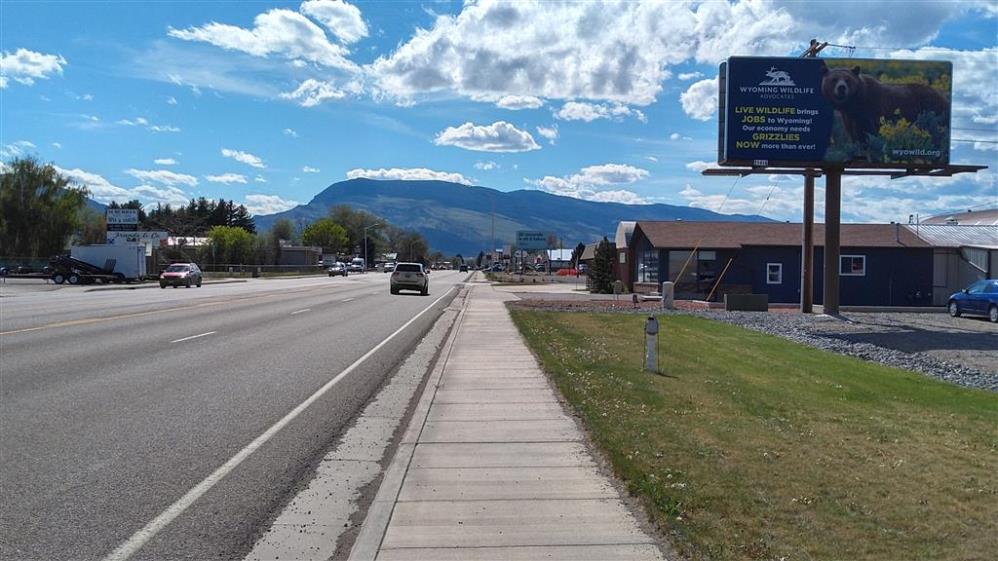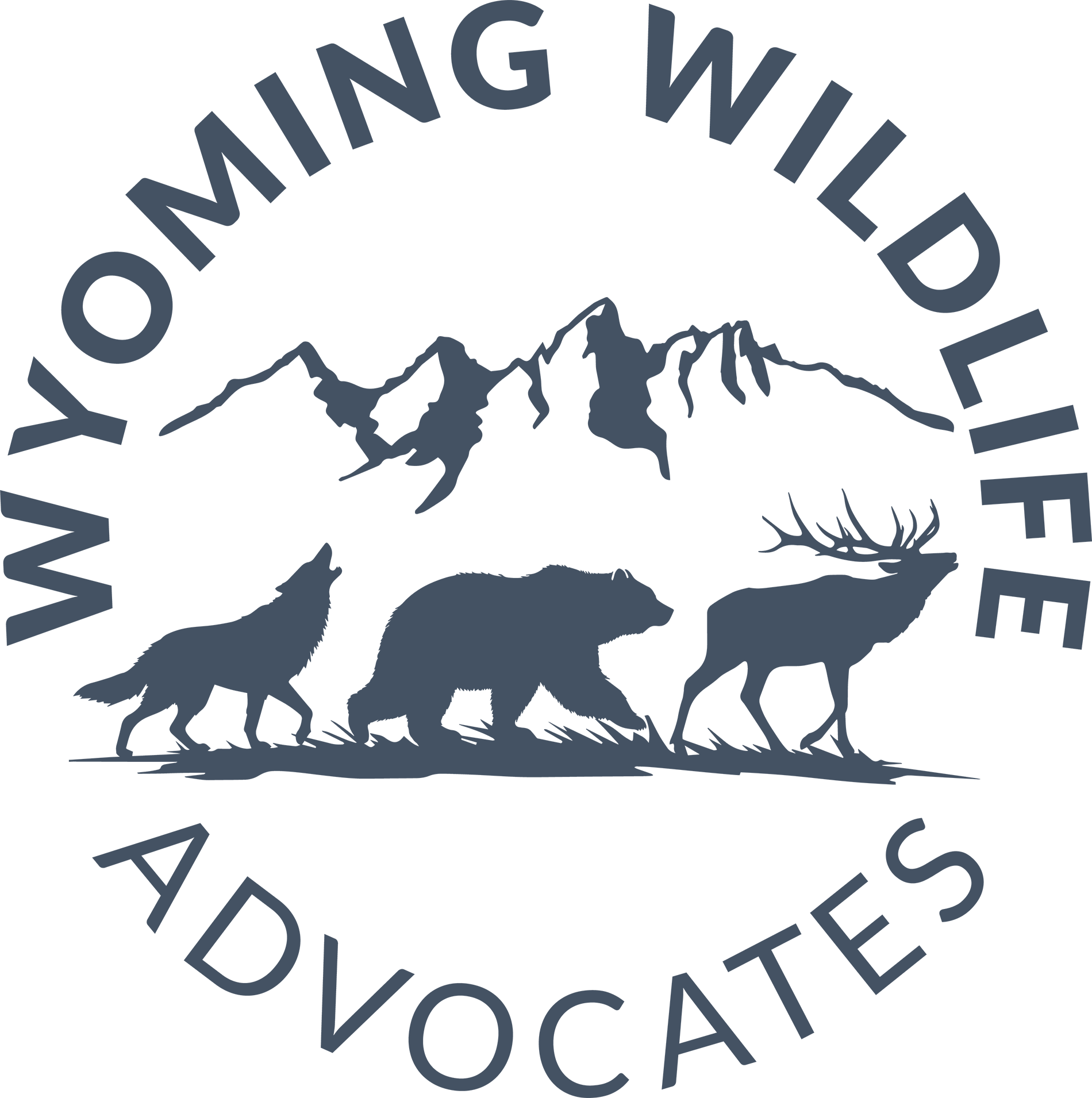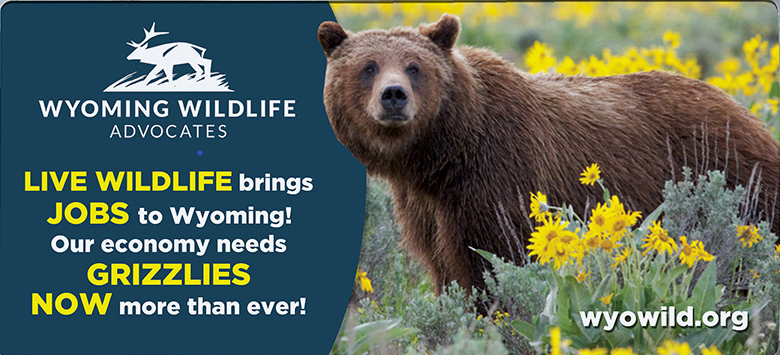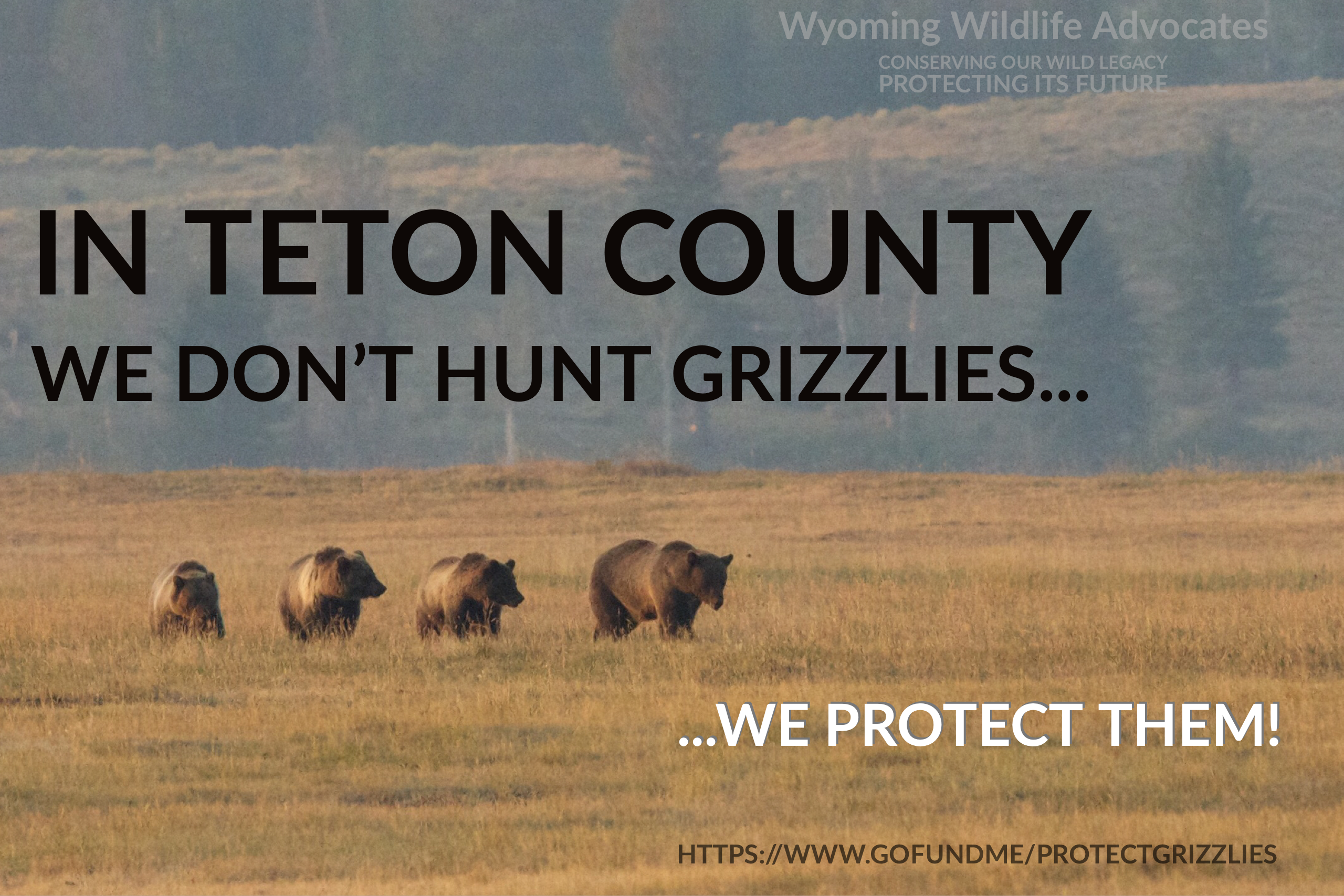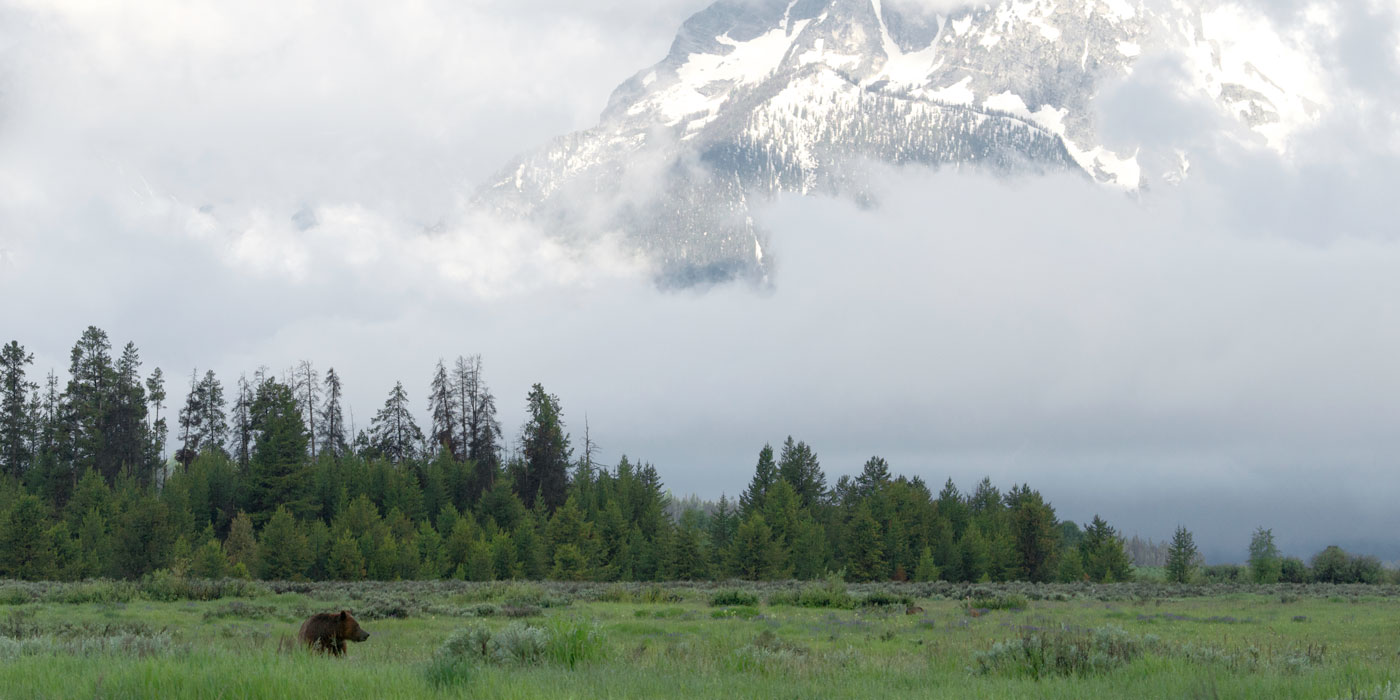CODY, Wyoming, (June 22, 2020)— Wyoming Wildlife Advocates’ latest billboard in Cody features a photo of a grizzly with the words, “Live wildlife brings JOBS to Wyoming. Our economy needs GRIZZLIES now more than ever!” The billboard will be in place throughout the summer season and into the fall.
With COVID-19 a predominant factor in every American’s life, the economy is a topic on most people’s minds these days. Wyoming has typically been in a cycle of boom and bust as reliance on coal, oil, and gas has been the mainstay of the economy. However, in the past 50 years, an increase in tourism has brought the value of this sector up to the second largest income producer in the state. As Wyoming grapples with budget cuts to important community services, they have a golden goose (or more rightly stated – a golden grizzly) staring them directly in the face. As we have seen people reconnecting with the outdoors after being quarantined for months, our national and state parks have become a beacon of relief. One of the busiest areas of the state has been Grand Teton National Park where the matriarch of the Tetons herself, 399, has emerged with four cubs to the delight of wildlife-watchers from all over the country. People are flocking to see the bruin family and spending their money in hotels, restaurants, and gas stations statewide. With people still not feeling fully comfortable boarding an aircraft, many are driving to Yellowstone and the Tetons and spending money along the way.
The state of Wyoming continues to push for hunting of grizzly bears and claims they are fully recovered, even though there are only 700 roaming the Greater Yellowstone Ecosystem. They have no intentions of having grizzly bears anywhere else other than within the confines of the small Demographic Monitoring Area that has been set aside in the northwest part of the state. Climate change, conflicts with livestock producers, depletion of food resources, and human attractant conflicts are already killing grizzlies at record rates without the added pressure of hunting. A hunting season would only bring in about $50,000 to the state, whereas tourism from National Park Service lands brings in nearly $1 billion to the state each year.

Travel and tourism is a potent economic engine for Wyoming, and wildlife fuels it. Other places have beautiful mountains, forests, and rivers, but wildlife is what makes this region unique. In marketing terms, wildlife is our brand. The value of wildlife to Wyoming is a very simple risk/reward calculation. One the one hand, hunting grizzlies will bring little benefit to our economy. On the other hand, bad publicity surrounding a hunt would have significant repercussions and could damage our reputation as a wildlife-rich area, potentially for years to come. That damage will ripple across the state impacting jobs, incomes, taxes, quality of life, and more.
When the state was set to begin hunting grizzlies immediately after delisting from the Endangered Species Act, they would have allowed 22 bears to be killed. Those 22 bears could be worth millions, if not billions, over the next several years. Ecotourism has become the mainstay of many communities such as the Spirit Bear Lodge in British Columbia, Brooks Falls in Alaska, and wherever grizzly bears are found. Large carnivores have become so rare that many will travel just to see them. “We can either ignore the value that wolves and bears bring to our economy, or we can embrace the potential they have to create even more prosperity across Wyoming,” says Kristin Combs, executive director of Wyoming Wildlife Advocates. “Many communities from Rock Springs to Buffalo could see an increase in jobs and economic input just from having these animals present on the landscape.”
But what about Wyoming’s ranching culture? Won’t they be greatly impacted by the expansion of wolves and bears throughout the state? Not if Wyoming promotes non-lethal conflict deterrents which have proven to work for producers from Montana to Italy. If Wyoming can become more solution-oriented and educate livestock producers on how to live with large carnivores, then we can have both robust populations of native wildlife and keep our ranching heritage alive.
Grizzlies and wolves are a valuable asset to the state of Wyoming with over seven million visitors coming to the state to visit the national parks with large carnivores at the top of their list of animals to see. More than 12,000 jobs were created as a result. Statistics indicate that fewer people are hunting but wildlife-watching is rapidly rising, including expenditures by wildlife watchers. As we move further into the 21st Century, Wyoming cannot afford to fall behind and keep losing jobs and innovation. The entire state can be a world-class wildlife watching destination with unparalleled opportunities to see wolves and bears if only we take advantage of what we already have.
Wyoming Wildlife Advocates is a nonprofit organization focused on informing, educating, and empowering communities to preserve our wild legacy and protect our shared wildlife resources. We envision a Wyoming that leads the nation in exceptional and innovative wildlife management; all stakeholders are valued equally, and management decisions are driven by the best available science. Headquartered in Jackson, Wyoming, WWA has thousands of supporters in Wyoming, the Greater Yellowstone Ecosystem, and nationwide. www.wyowild.org
